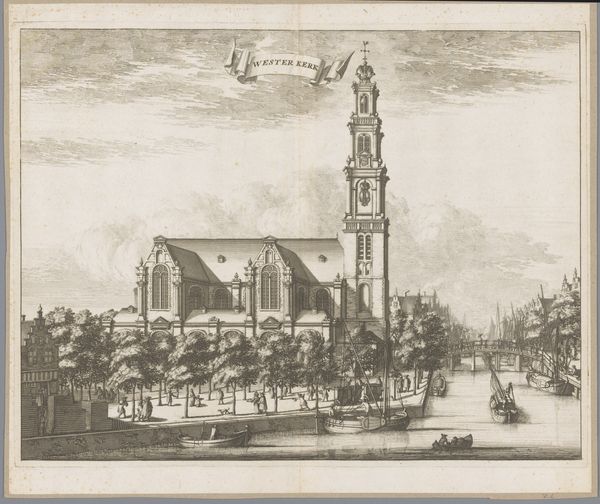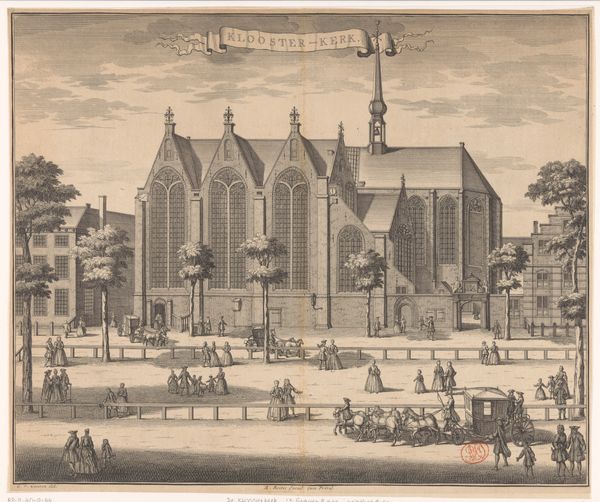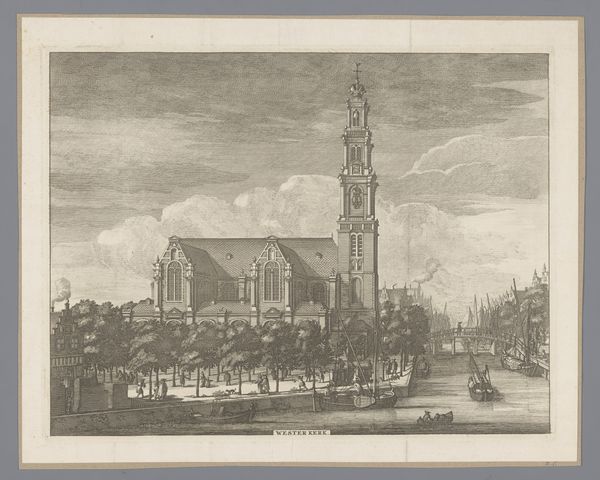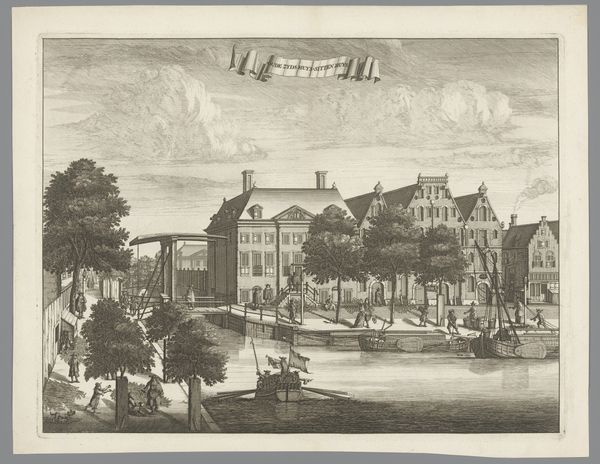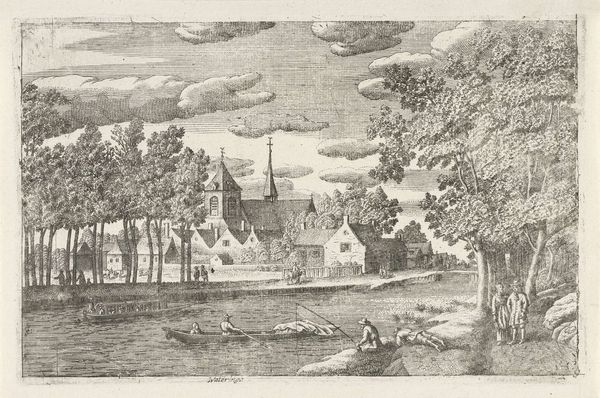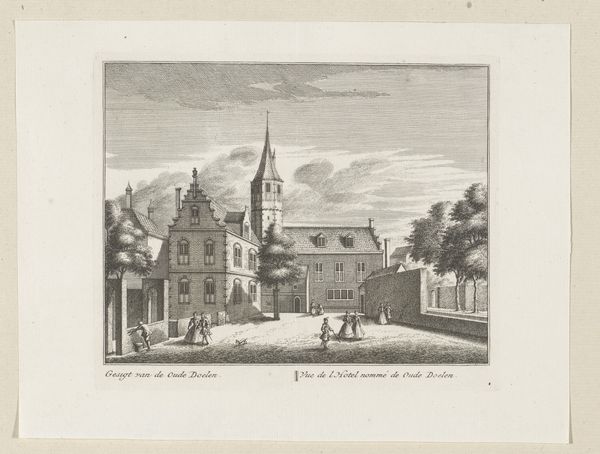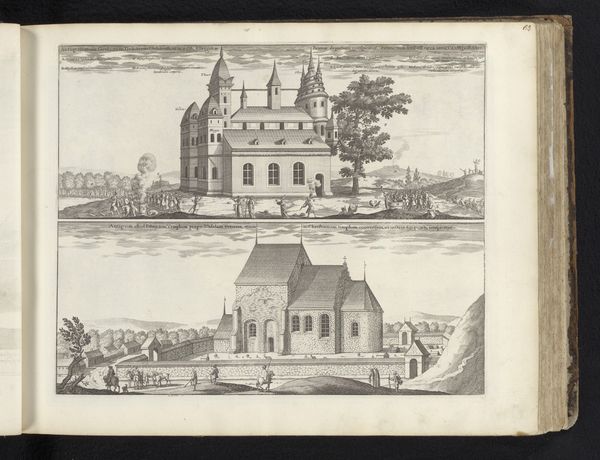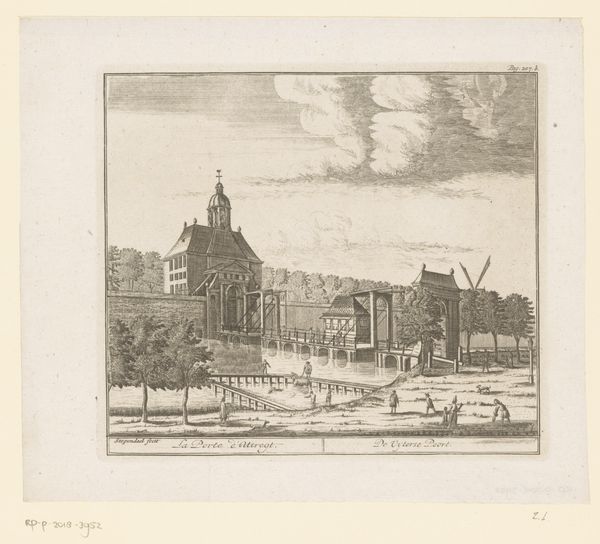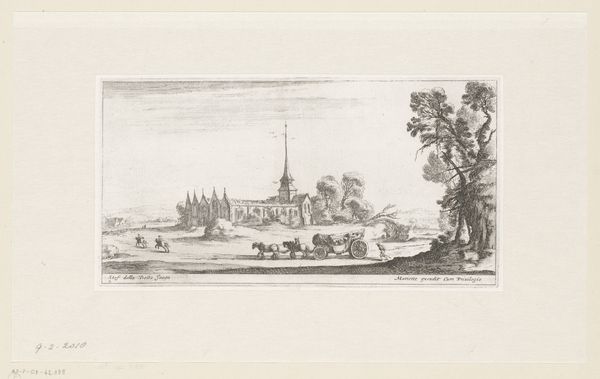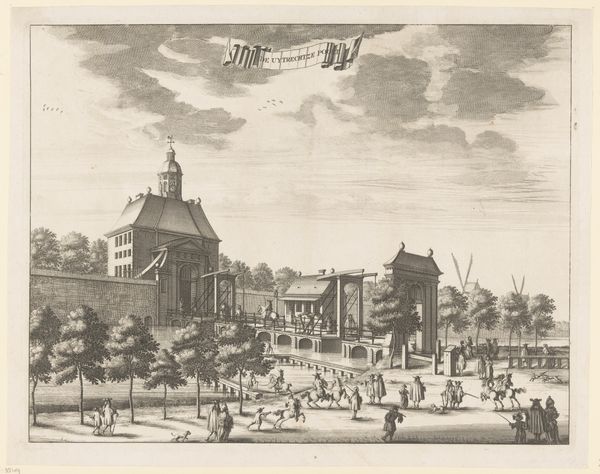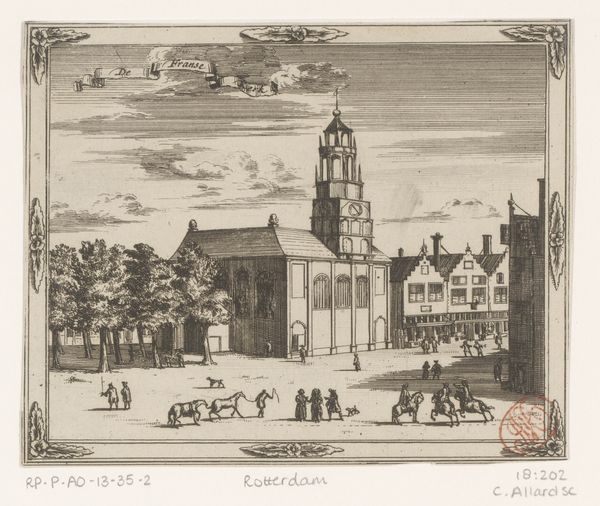
print, engraving
#
dutch-golden-age
# print
#
landscape
#
cityscape
#
engraving
Dimensions: height 296 mm, width 354 mm
Copyright: Rijks Museum: Open Domain
Curator: Today we're looking at an engraving from the late 17th century: "Gezicht op de Noorderkerk te Amsterdam," or "View of the Noorderkerk in Amsterdam," created between 1693 and 1694. Editor: It's stark. Black and white. All about form and line, and remarkably detailed for such a broad view. Curator: The engraving depicts the Noorderkerk church in Amsterdam, presented within its bustling urban context. Consider what that urban context might tell us about identity, labor, religion and society. Editor: And consider the labor that produced this image! The incredible skill involved in carving this level of detail into a printing plate—that's skilled craft work elevating the ordinary, representing both place and process. You get a real sense of place here, but how would this work be distributed? Who was consuming images like these? Curator: Certainly not everyone! Its existence as a print means that, while relatively more accessible, its acquisition and interpretation still speak to socio-economic stratifications and access to cultural capital. This viewpoint privileges the Noorderkerk and those in its shadow. Editor: But its mass production allows it to disseminate information and promote a specific architectural style. You know, this isn't just about a church, it’s about the materials: the ink, the paper, the copper or whatever metal plate they used, their sources, how it's impacting global markets in the early modern period...it all comes into play! Curator: Absolutely. This image acts as a conduit. Consider too the themes represented - religion, industry, community - all under the rubric of Dutch exceptionalism. Who benefited most? What voices remain absent? Editor: Well, this image clearly valorizes craftsmanship and commercial success of 17th century Netherlands and the Dutch Golden Age. Curator: I'm thinking a lot about access, equity, and social power. Whose Amsterdam is being represented and disseminated here? Editor: For me, seeing the intricate detailing really gives a strong idea of both labor and place in this work, opening up broader material histories about class.
Comments
No comments
Be the first to comment and join the conversation on the ultimate creative platform.
